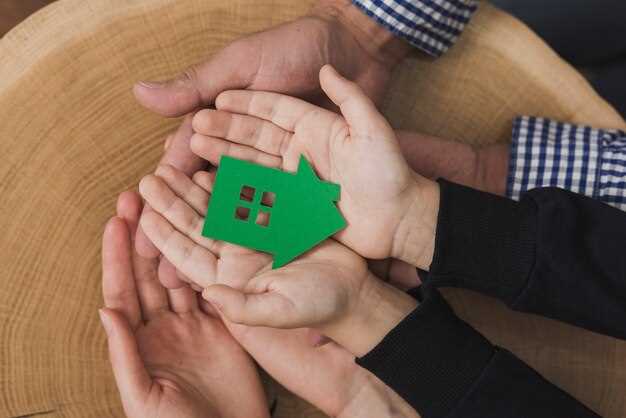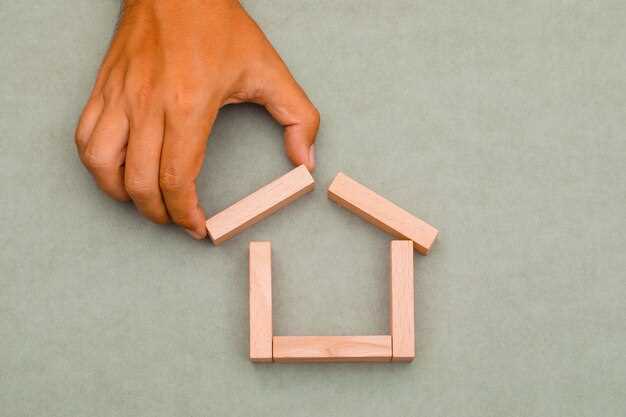Consider using recycled materials such as cellulose, made from post-consumer paper, or denim insulation, crafted from textile waste. These sustainable options not only reduce landfill waste but also provide excellent thermal performance, lowering energy bills and improving comfort in your home.
Hemp insulation stands out for its natural properties and carbon sequestration capabilities. It regulates humidity while maintaining a low environmental impact during production, making it a smart choice for Australian climates.
Look into sheep’s wool insulation as another eco-friendly alternative. Its natural fibers offer superior insulating qualities and are biodegradable, ensuring minimal environmental harm when it reaches the end of its life cycle.
Consider the benefits of reflective insulation as well. This material combats heat build-up during hot summer months, enhancing thermal comfort without compromising on sustainability. It’s particularly effective in regions with a high solar gain.
Choosing sustainable insulation not only benefits your home but also contributes to a healthier planet. Explore these eco-friendly choices and see the difference they can make in your living environment.
Choosing the Right Sustainable Insulation Materials

Select insulation materials with a low environmental impact and high thermal performance. Consider products like cellulose, made from recycled paper, which provides excellent insulation and minimizes waste. Sheep’s wool is another natural option; it regulates moisture and has a high R-value, making it effective for temperature control.
Recycled Options
Look for insulation made from recycled materials, such as denim or fiberglass. Denim insulation comes from post-consumer textile waste, offering good sound absorption and thermal properties. Fiberglass, when sourced from recycled glass, can provide effective insulation while using fewer raw materials.
Eco-Friendly Certifications
Choose materials with eco-labels like Green Star or Ecospecifier. These certifications ensure that products meet environmental standards and have lower carbon footprints. Always check for VOC levels as well, opting for low-emission products to improve indoor air quality.
Comparing Performance: Natural vs. Synthetic Insulation

Natural insulation materials, like cellulose and wool, offer excellent thermal performance with a lower environmental footprint. Cellulose, made from recycled paper, provides good resistance to heat transfer, with R-values ranging from 3.1 to 3.7 per inch. Wool insulation not only regulates temperature but also absorbs moisture without compromising its insulative properties, ensuring long-term durability.
Synthetic options such as fiberglass and foam board deliver high R-values, often exceeding 4.0 per inch. Fiberglass is widely accessible and cost-effective, making it a popular choice among homeowners. However, it may release irritants during installation and lacks the sustainability factor of natural products. Polyurethane foam boasts superior thermal resistance and seals gaps effectively but is derived from petrochemicals, raising concerns about its environmental impact.
The moisture management capabilities of natural insulation outperform most synthetic variants. Natural materials can absorb and release moisture, preventing mold growth and maintaining indoor air quality. Synthetic options, while they can provide a moisture barrier, often require additional precautions to address potential moisture issues.
Fire resistance varies significantly; natural materials like wool have inherent fire-retardant properties, while synthetic insulations may release harmful fumes when exposed to flames. This factor is crucial for creating safe living environments, particularly in bushfire-prone areas of Australia.
Overall, while synthetic insulation can provide higher R-values and cost savings initially, natural insulation stands out for sustainability, health benefits, and ecological impact. Weighing these factors against your specific needs will guide you in selecting the right insulation for long-term comfort and efficiency in your home.
Understanding R-Values and Their Importance in Insulation

Choose insulation materials with higher R-values for better thermal resistance. R-value measures the material’s capacity to resist heat flow; the higher the R-value, the better the insulation’s performance. In Australia, common insulation options such as fiberglass, foam board, and cellulose have varying R-values, influencing energy efficiency in homes.
For instance, fiberglass batts typically offer R-values ranging from 2.9 to 4.3 per inch, while spray foam can reach R-values of 6 to 7. Using higher R-values in roofs, walls, and floors protects against heat loss in winter and heat gain in summer, which is essential for achieving comfortable indoor temperatures without excessive energy use.
Consider climate when selecting insulation materials. Colder regions benefit from materials with higher R-values, whereas milder climates might require less insulation. Building codes in various Australian states outline minimum R-value requirements depending on the location, ensuring that new builds and renovations adhere to energy efficiency standards.
Additionally, assess the entire insulation system, including air sealing and moisture management. Insulation works most effectively when no air leaks compromise its performance. Properly sealed homes enhance energy efficiency, so check for gaps around windows, doors, and ducts.
Regularly inspect insulation to maintain its R-value over time. Factors like moisture accumulation or pest infestations can degrade insulation’s effectiveness. Taking preventive measures ensures your insulation continues to perform at its peak.
Incorporating sustainable insulation options, such as recycled denim or sheep’s wool, can also enhance R-value while being eco-friendly. Evaluating both energy efficiency and environmental impact leads to smarter choices for Australian homes.
The Benefits of Wood Finishes in Sustainable Interior Design
Choose wood finishes for a warm, inviting atmosphere in your home. These finishes highlight the natural beauty of timber, seamlessly enhancing both modern and traditional aesthetics. They provide a timeless appeal that can complement various design styles.
Wood finishes also contribute to sustainability. They come from renewable sources and require less energy to produce compared to synthetic alternatives. Opting for local woods reduces carbon footprints associated with transportation, supporting local economies while being eco-conscious.
Durability is another advantage. Quality wood finishes resist wear and tear, reducing the need for frequent replacements. This longevity not only saves money but also minimizes waste, aligning with sustainable practices.
Easy maintenance makes wood finishes attractive. Regular cleaning with natural products ensures the beauty of the wood is preserved without harmful chemicals. Many finishes enhance wood’s natural resilience, protecting it from scratches and moisture.
Health benefits arise from using wood finishes. Natural wood can improve indoor air quality by balancing humidity levels and minimizing toxic emissions. Choosing non-toxic finishes ensures a safe environment for your family.
Consider the aesthetic versatility of wood finishes. They can be stained or painted to match any color palette, providing endless design possibilities. This adaptability allows you to refresh your space without major renovations, promoting resourcefulness in design.
Incorporating wood finishes into your interior design not only elevates the visual appeal but also supports sustainable living. Make choices that reflect a commitment to the environment while enjoying the beauty and functionality of natural materials.
How to Select Eco-Friendly Furniture for Australian Homes
Prioritize materials when choosing eco-friendly furniture. Look for sustainably sourced wood, like eucalyptus or bamboo, which grow quickly and require less water. Check for certifications such as FSC (Forest Stewardship Council) that guarantee responsible forestry practices.
Consider furnishings made from recycled or reclaimed materials. Items crafted from reclaimed timber not only reduce waste but also bring unique character to your home. Several Australian artisans focus on creating beautiful furniture from salvaged materials, making it a great choice for sustainability and style.
Evaluate the finishes and adhesives used in furniture. Opt for low-VOC (Volatile Organic Compounds) paints and finishes. These limit indoor air pollution, beneficial for both your health and the environment. Brands increasingly offer eco-friendly options, making them easier to find.
Factor in the production process. Support local manufacturers to cut down on transportation emissions. Australian companies often adopt ethical practices, ensuring fair labor conditions and lower environmental impact. Research the brand’s values and their commitment to sustainability.
Assess the durability of the furniture. Investing in well-made pieces ensures longevity and reduces the need for frequent replacements, thus lessening waste. Consider timeless styles that can adapt to changing design trends.
Evaluate your own lifestyle needs. If you have children or pets, choose materials that are easy to clean and maintain while still being eco-friendly. Fabrics like organic cotton or hemp are not only sustainable but also durable.
| Material | Benefits | Considerations |
|---|---|---|
| Sustainable Wood | Renewable, lower carbon footprint | Check for certifications |
| Recycled Materials | Reduces waste, unique aesthetics | Varied quality; inspect before purchase |
| Low-VOC Finishes | Improves indoor air quality | May be costlier, but worth it |
| Durable Fabrics | Long-lasting, easy to clean | Ensure eco-friendly sourcing |
Stay informed about brands that align with sustainable practices. Many companies now highlight their commitments to eco-friendliness in marketing, making it easier to make informed choices. Adopting eco-friendly furniture is a practical step towards a more sustainable home.
Practical Tips for Maintaining Sustainable Insulation
Regularly inspect your insulation. Check for signs of wear, damage, or moisture. This helps to ensure your insulation remains effective over time.
- Look for any gaps or cracks in your insulation material where air might escape.
- Examine the area around windows and doors for drafts.
- Inspect the attic and crawl spaces for any moisture build-up or mold growth.
Keep insulation dry. Moisture can lead to mold and reduce insulating properties. Consider using a dehumidifier in areas prone to dampness.
- Seal any leaks in your roof or walls to prevent water ingress.
- Ensure proper ventilation in attics and basements to prevent humidity buildup.
Maintain temperature balance. Ensure that your heating and cooling systems are functioning properly. This reduces the strain on your insulation and extends its longevity.
- Schedule regular maintenance checks for HVAC systems.
- Replace filters as recommended to maintain airflow efficiency.
Choose eco-friendly cleaning methods for any maintenance. Harsh chemicals can harm insulation materials. Instead, use natural solutions like vinegar or baking soda.
- Mix vinegar with water for a mild cleaning solution.
- Use a damp cloth to wipe down hard surfaces without soaking the insulation.
Upgrade insulation materials when necessary. If you notice a significant drop in performance, consider replacing old insulation with sustainable alternatives. Options like cellulose, wool, or recycled fiberglass offer great benefits.
- Cellulose insulation has excellent thermal performance and is often made from recycled paper.
- Wool insulation is a natural, renewable resource that regulates humidity well.
Collaborate with experts for performance evaluation. Consulting with insulation specialists can provide insights into your system’s effectiveness and help identify specific areas for improvement.
Document your maintenance efforts. Keeping records helps track performance trends and informs future decisions on insulation upgrades or changes.
Maximizing Energy Efficiency with Sustainable Design Practices
Integrate passive solar design principles into home layouts. Position windows to capture sunlight, reducing heating costs during winter. Utilize overhangs to block intense summer sun, maintaining comfortable indoor temperatures.
Insulation Choices
Select high-performance insulation materials, such as recycled cellulose or sheep’s wool. These options provide excellent thermal resistance while reducing environmental impact. Ensure insulation is installed correctly to avoid air leaks that compromise energy savings.
- Consider spray foam or fiberglass insulation for attics and walls.
- Measure R-values to understand thermal resistance effectiveness.
- Opt for materials with low embodied energy to minimize carbon footprint.
Air Quality and Ventilation
Incorporate energy recovery ventilators (ERV) to enhance indoor air quality while retaining energy. These systems exchange stale indoor air with fresh outdoor air, significantly improving ventilation without energy loss.
- Choose plants that naturally purify air, promoting a healthy living space.
- Install low-VOC paints and finishes to minimize harmful emissions.
Utilize energy-efficient appliances and lighting throughout the home. Look for ENERGY STAR ratings when shopping for new devices. Switch to LED lighting, consuming significantly less energy than traditional bulbs.
Implement smart home technology to optimize energy consumption. Programmable thermostats adjust heating and cooling based on occupancy, reducing energy waste when homes are unoccupied.
Regular maintenance of heating and cooling systems ensures they operate at peak performance. Schedule annual inspections and cleanings to promote longevity and efficiency.
Incorporating these sustainable design practices fosters a more energy-efficient home while contributing positively to environmental conservation efforts.
Local Resources for Sustainable Building Supplies in Australia
Check out the Green Building Council of Australia (GBCA) for a comprehensive directory of sustainable building material suppliers. They feature certified products that align with eco-friendly practices. Visit their website to find local suppliers that prioritize sustainability in their offerings.
Another excellent option is EcoBuilding, based in Melbourne. They specialize in a wide array of sustainable insulation materials, including recycled denim and cellulose. Their commitment to reducing waste makes them a go-to resource for eco-conscious builders.
Community-Based Initiatives
Explore local community initiatives like the Reclaimed Wood Exchange in various states. These organizations recycle timber from deconstructed buildings. Purchasing reclaimed wood not only supports sustainability but also adds a unique character to your projects.
Australian Men’s Sheds also provide opportunities to source reclaimed materials. These community workshops often take in donated supplies and sell them at low prices. Engaging with these groups helps minimize waste and supports local craftsmanship.
Online Platforms
Use platforms like Gumtree and Facebook Marketplace to discover locally sourced, second-hand building materials. Many individuals and businesses offer surplus and used materials at affordable rates. This practice contributes to waste reduction while also saving money.
For high-quality new sustainable materials, consider Bunnings Warehouse’s “Eco” product line. They offer a variety of environmentally friendly options, from insulation to paints, tailored for Australian conditions.
Video:
5 ECO FRIENDLY ROOF IDEAS || Sustainable housing ideas
5 ECO FRIENDLY ROOF IDEAS || Sustainable housing ideas by ConCreed Projects 2,761 views 3 years ago 3 minutes, 28 seconds
Q&A:
What are the most popular eco-friendly insulation materials available for Australian homes?
In Australia, several eco-friendly insulation materials are favored for their sustainability and energy efficiency. Some popular options include recycled cotton, which is made from post-industrial denim scraps and is safe and non-toxic; sheep’s wool, which provides excellent thermal performance and is biodegradable; bamboo insulation, known for its fast growth and renewability; and cellulose, made from recycled paper products. These materials not only reduce energy consumption but also have minimal environmental impact.
How does sustainable insulation contribute to energy efficiency in homes?
Sustainable insulation significantly improves energy efficiency by reducing heat loss in winter and heat gain in summer. Materials like wool and cotton trap air, providing effective thermal resistance. This means less energy is required for heating and cooling, which not only lowers utility bills but also reduces greenhouse gas emissions. In Queensland and other warmer regions, using such materials can lead to considerable energy savings throughout the year.
What factors should homeowners consider when choosing eco-friendly insulation?
Homeowners should consider several factors when selecting eco-friendly insulation. Firstly, the insulation’s R-value, which measures thermal resistance, should match the climate needs of the location. Cost and installation requirements are also important; some materials may have higher initial costs but lower long-term energy bills. Additionally, homeowners should evaluate the insulation’s source, ensuring it is sustainably produced and safe for indoor air quality. Lastly, check for certifications related to performance and environmental impact.
Can eco-friendly insulation materials resist moisture and mold?
Yes, many eco-friendly insulation materials are designed to resist moisture and mold. For example, sheep’s wool naturally absorbs moisture without losing its insulating properties and can release it back into the air when conditions change. Bamboo insulation typically has antifungal properties, making it resistant to mold. However, proper installation and ventilation of insulation are crucial to prevent moisture build-up, regardless of the material used.
Are there any government incentives for using sustainable insulation in Australia?
Yes, the Australian government, along with various state governments, provides incentives to encourage the use of sustainable insulation. These often come in the form of rebates, tax credits, or grants aimed at improving energy efficiency in homes. Programs like the Energy Savings Scheme in New South Wales offer financial benefits for homeowners who upgrade to better-insulating materials. It’s advisable for homeowners to check with local authorities and energy providers for specific incentives available in their area.
What are some eco-friendly insulation materials suitable for Australian homes?
There are several eco-friendly insulation options that homeowners in Australia can consider. Some popular materials include cellulose, which is made from recycled paper and is treated with non-toxic fire retardants. Another option is sheep’s wool, known for its excellent thermal properties and moisture control. Additionally, recycled denim insulation made from old jeans offers a sustainable choice, as it is both safe and effective. For those interested in plant-based options, hemp insulation can provide good thermal efficiency and is biodegradable. These materials not only reduce environmental impact but also contribute to healthier indoor air quality.
How does sustainable insulation improve energy efficiency in homes?
Sustainable insulation enhances energy efficiency by providing better thermal resistance, which reduces the need for heating and cooling systems to work as hard. By keeping homes warmer in winter and cooler in summer, eco-friendly insulation materials help maintain a stable indoor temperature. This means that homeowners can save on energy bills while minimizing their carbon footprint. Additionally, improving insulation can prevent air leaks, further enhancing energy conservation. In the long run, investing in sustainable insulation not only benefits the environment but also leads to financial savings for homeowners through reduced energy consumption.
